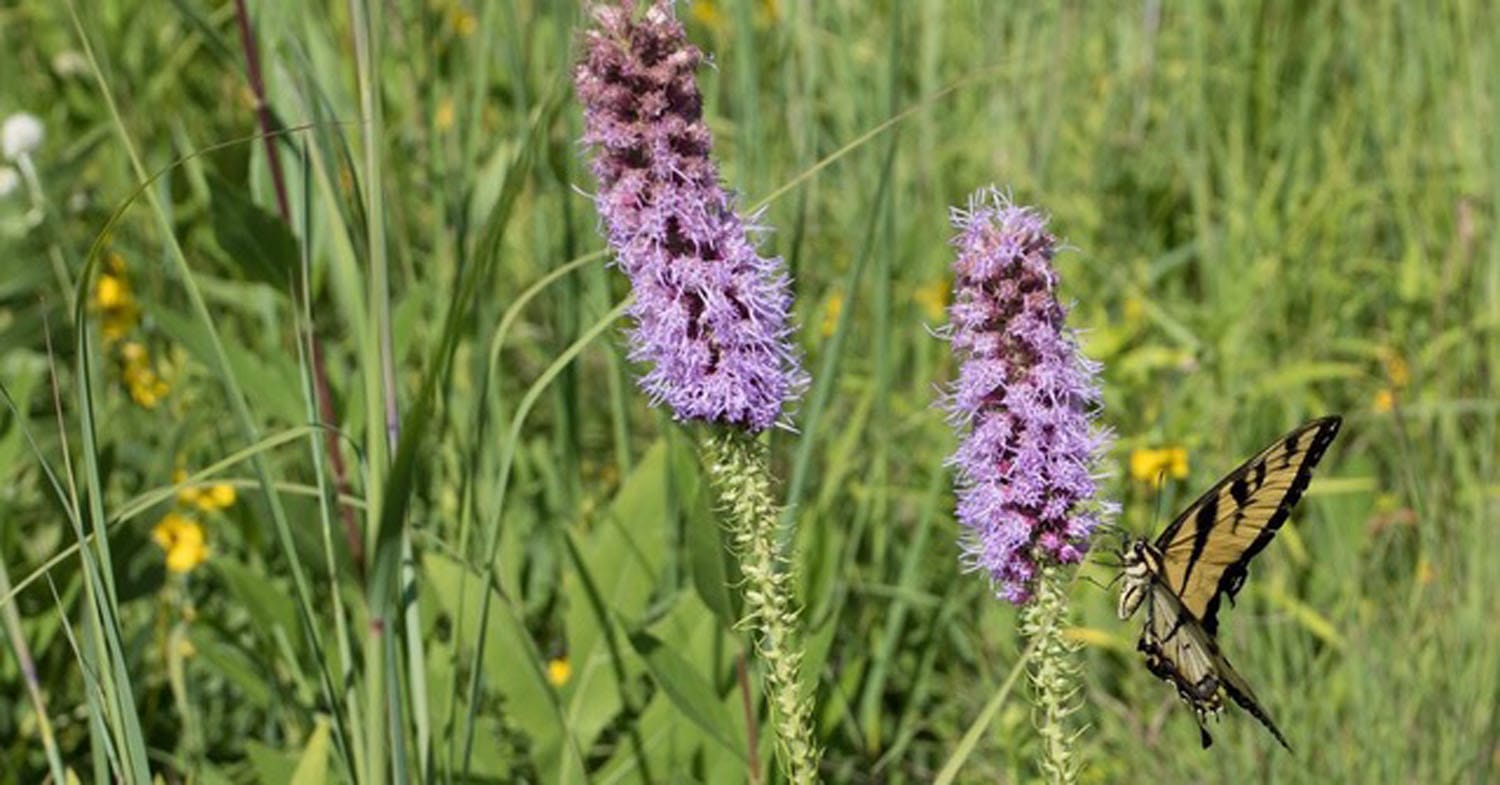A Prairie’s Point of View
If you’ve recently planted prairie, or are thinking you might, you’re likely looking forward to tall spires of grass and vibrant blooms. You may be eager to restore habitat or stem erosion from your land.
But do you know what to expect? An infant prairie may look bare and brown, or short and stubby. How long must you wait for the picturesque prairie you envision?
Most of what’s written about establishing prairie is from a third-person view – a human perspective. It might be technical, or detached and dry. But what if we could hear the prairie speak? What might we learn? If your fledgling prairie could share its story, perhaps it might say this.
Seed Dreams
(Before the First Growing Season)
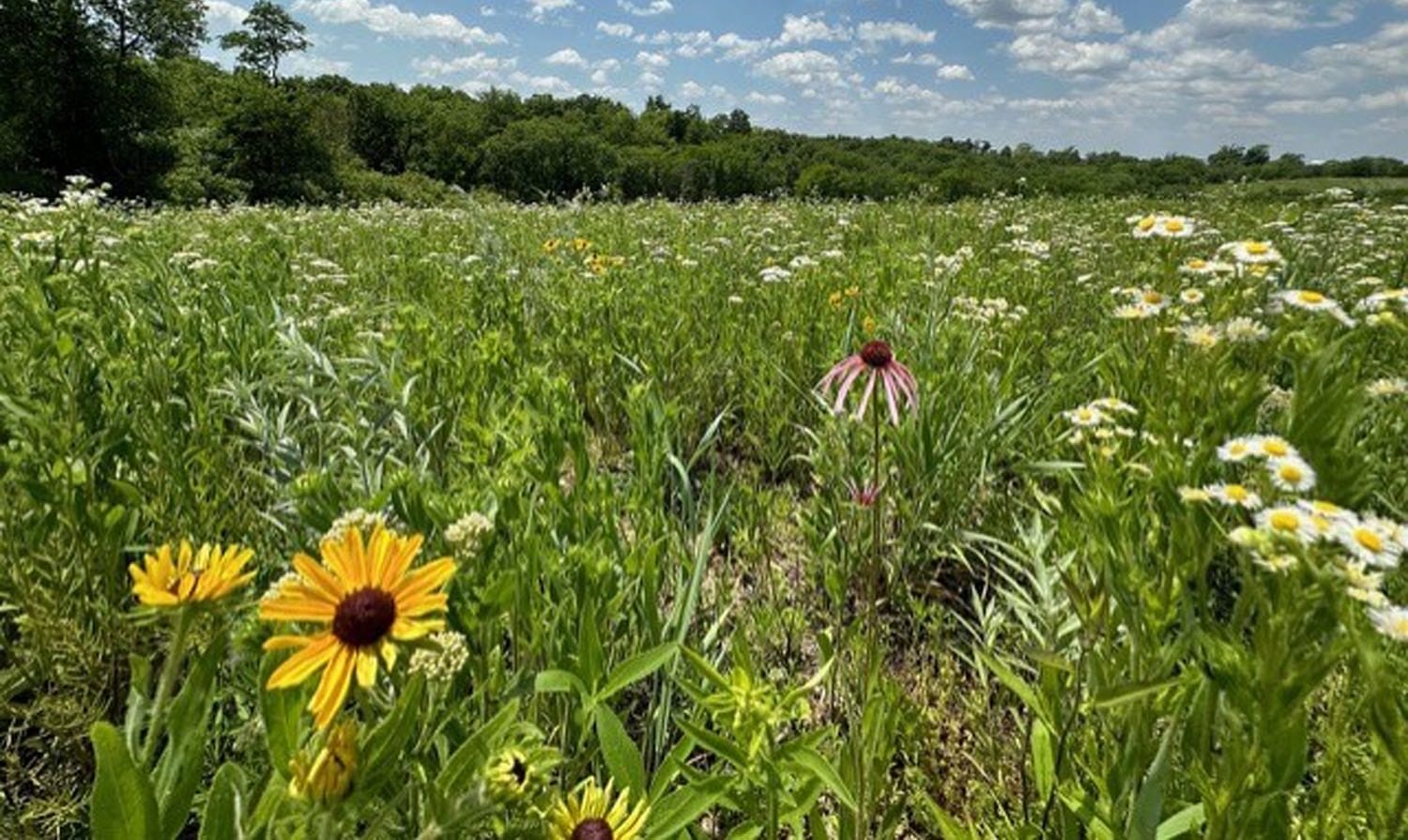 The site is cleared for my arrival, and I am filled with anticipation. Where once corn grew tall, now all is bare earth, ready for me. For two years, the farmer prepared this space for me, careful to use only specific herbicides that guarded her cash crop but wouldn’t stop my seed from sprouting. Now the long-awaited day has come. The farmer has been diligent, assessing these acres to ensure they have the right hydrology, topography and sunlight for me to grow and flourish.
The site is cleared for my arrival, and I am filled with anticipation. Where once corn grew tall, now all is bare earth, ready for me. For two years, the farmer prepared this space for me, careful to use only specific herbicides that guarded her cash crop but wouldn’t stop my seed from sprouting. Now the long-awaited day has come. The farmer has been diligent, assessing these acres to ensure they have the right hydrology, topography and sunlight for me to grow and flourish.
On a crisp and quiet morning in late autumn, before the first snowfall, the farmer spreads me on land where my ancestors once lived. I am all these seeds, full of promise, ready to grow. For my benefit, she has chosen a broad mix of over 50 native plants, each selected from my local family based on their genetics. If I am to thrive in this place, I will need the genetic fitness of my forebearers.
As the seeding starts, I feel a thrill as I fly through the air. For a fleeting moment I am weightless, suspended in the atmosphere, and I have a sudden sense of what it must be like for all those insects who will one day fly among me. But now I drop to Earth and feel the coolness of the soil surface. I will lie here quietly. I mustn’t go any deeper, for I’m barely bigger than grains of sand. As the cold sets in, I sink into slumber, recalling in my dreams a long-forgotten time when seas of grass swayed over this land. I’m aware of primal forces at work: freeze … thaw … wet … dry … cold. Gently, I sink my way into the soil at the depth preferred by each species that comprises my whole.
Awakening
(The First Growing Season)
The first hints of warmth soak into the soil. The familiar sensation of seed husks swelling with spring moisture awakens me from my winter slumber. I send a few little green shoots up to greet the sun, but my main focus is now below ground. I start to stretch my roots ever deeper into the soil, delighting in the textures. This soil is special, sacred even. It has been the home of my kind for more than 30 million years. I think of my grandmother, 10,000 generations back, and the gifts my ancestors bestowed.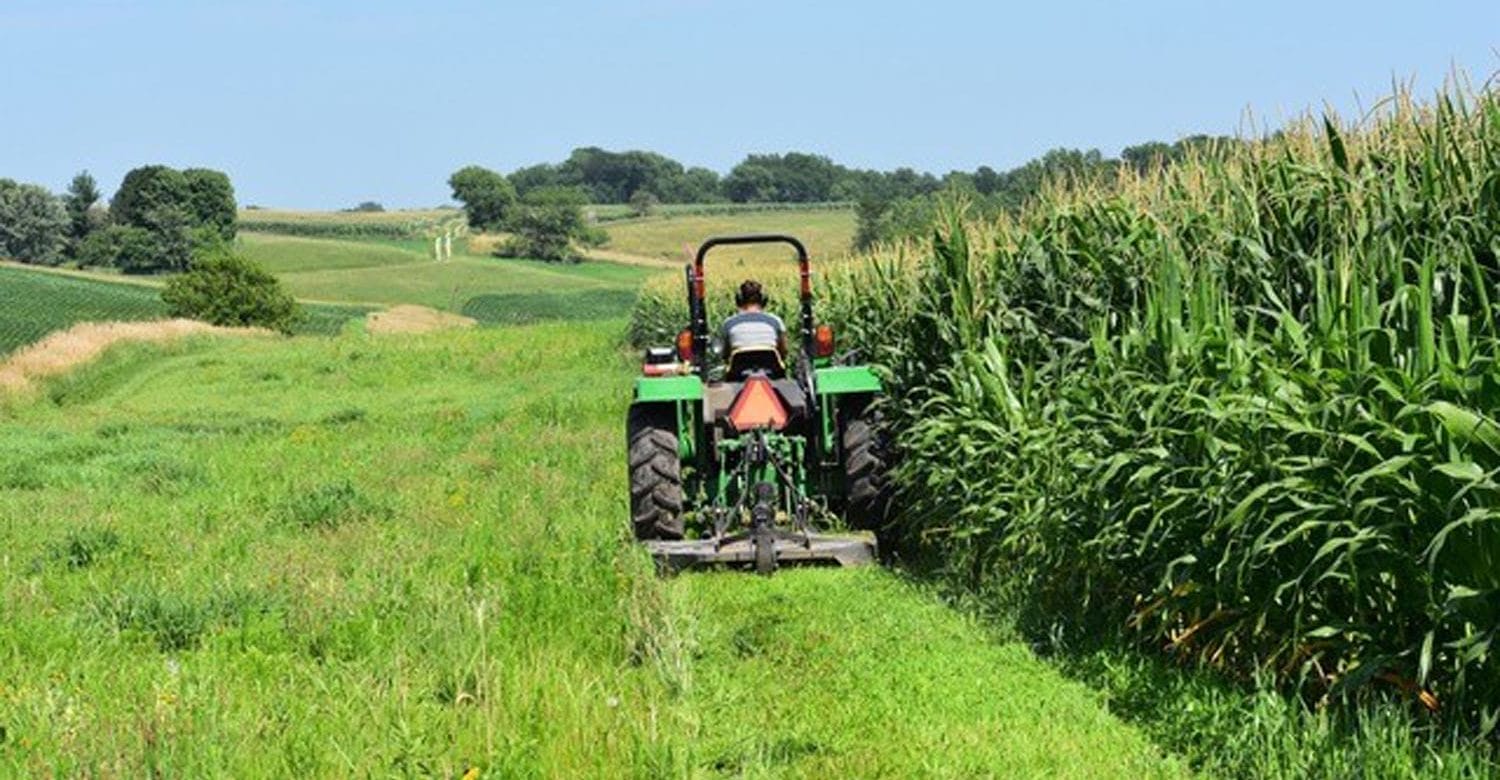
Some of my kin can live for a century or more. Through a perpetual cycle of death and renewal, their roots left behind layers of life-giving organics, pore space – a sponge. Ultimately, over my own life, 75% of my biomass will reside below ground and I will continue that legacy of life-giving decay.
The spring warms into summer, and the farmer tends to me by mowing weeds once they’re about a foot tall (any taller, and all that chopped weed matter might smother me). She will continue this through September, cutting weeds to 6 inches above ground. I need this help, for the soil was altered with the coming of the plows that broke the dense lattice of ancestral prairie sod. But I will work to restore what was. When I am just a little older, I will help to halt erosion and nutrient runoff – something unknown to my ancestors – by up to 90%. For now, I am content to focus on my downward journey.
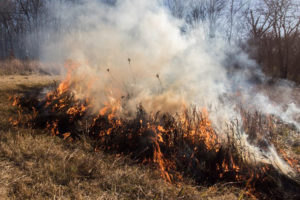
 Strengthening
Strengthening
(The Second and Third Growing Seasons)
I am fortunate. These two years have seen plenty of rainfall to sustain my growth. But it matters not. Had it been dry, I would simply have slumbered once again, waiting dormant for the rain to fall. This, too, is a gift from my forebears, who learned how to survive the whims of weather across the eons. I am resilient. But I still appreciate the farmer’s care. If I am to thrive, she and I are now linked in a shared journey, and I feel a certain joy when she passes by to study my above-ground growth.
Several of my fellows – like big bluestem, compass plant and gray-headed coneflower – are much taller now. We are strengthening into a sward of many layers, stratified by height and shade. The farmer seems to understand the things I need – competition, diversity, disturbance. I must have space to grow, so she removes perennial and biennial plants, like switchgrass and purple prairie clover, that might shade me out or stunt my growth. For my steward, this has meant mowing, and mowing again, to ensure that I will brim with a heterogeneous whole. To truly flourish as a prairie, I need that species diversity.
I may never know the tickle of a bison’s warm muzzle snuffling on my stems, or the thrill of being grazed and trampled by hundreds of those marvelous beasts that once thundered across the land. Such splendid perturbations entwined to forge a healthy whole – bison, prairie, fire. People, too, joined this symbiotic circle. When the First Peoples came, they knowingly wielded fire to tend the herds and help me thrive. Now, the farmer’s frequent mowing – which continues through these hot and hazy days of summer – stands in to re-create a portion of that nourishing disturbance.
Maturing
(The Start of Long-Term Care)
Four years have passed since the farmer sowed my seeds. My roots now stretch nearly 10 feet long in spots and form a thick mat beneath the soil. They will reach down farther still – some will grow to nearly 20 feet. Big bluestem, Indian grass, prairie aster, compass plant and rattlesnake master stand tall overhead. From miniscule seed, I have become a macroscopic multitude; an oasis for birds and bees, butterflies and badgers, moths and many others.
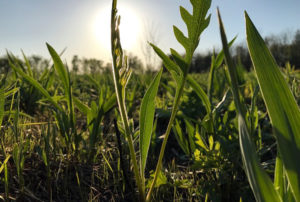 As I anchor and rebuild the soil, I shed my seeds for those to come. My stiff stems can catch the winter drifts, and my seedheads offer sustenance to wildlife during a shivering season of scarcity. I am now established here, on this ancestral turf – and in my return, the people see a glimpse of what once was, and what can be restored. Still, my upkeep must persist. I will need routine fire and mowing to halt the ingress of the trees, and to keep me free of fallen plant debris. Perhaps the farmer will even allow me to be grazed. In this way, the symbiotic circle of connection can also be restored – people, prairie, fire, grazer.
As I anchor and rebuild the soil, I shed my seeds for those to come. My stiff stems can catch the winter drifts, and my seedheads offer sustenance to wildlife during a shivering season of scarcity. I am now established here, on this ancestral turf – and in my return, the people see a glimpse of what once was, and what can be restored. Still, my upkeep must persist. I will need routine fire and mowing to halt the ingress of the trees, and to keep me free of fallen plant debris. Perhaps the farmer will even allow me to be grazed. In this way, the symbiotic circle of connection can also be restored – people, prairie, fire, grazer.
If I’m still here 100 years from now, I will pass on these gifts of wisdom and memory – these ancestral dreams, remembered in the seeds I leave behind.
This story was written with insights from Luke Gran, CEO of Nevada, Iowa-based Prudenterra, a habitat restoration company; and the Tallgrass Prairie Center, based in Cedar Falls, Iowa. All photos are courtesy of Prudenterra.
Explore opportunities to plant habitat on your farm with our beneficial insects and habitat incentives cost-share programs.

